Following last week’s leaked images Porsche has lifted the veil on its all-new 911. While many wags will joke that nothing has changed, Porsche appears to have done a great job in managing the balance between heritage and progress (see our 991 v 997 comparison for more).
Aside from minor gripes about the wheel design and front LED styling we think the 991 is a great looking 911. The shapes around the rear wheel arch are unmistakably 911 and the side profile leaves nothing to chance.
Porsche generally take a less is more approach to their official material and as a result only basic details and just 13 images have been revealed to date. That’s not much when you consider this is just the third genuinely ‘all-new’ 911 since the original model in 1963 and the 996 in 1998.
Of course, the 991 will make its public debut in Frankfurt Motor Show (15–25 September). But the order book opens before then on 1 September and deliveries will start in early December. We’re not sure how much longer Australian buyers will need to wait, but we wouldn’t be surprised to see new 911s in local dealerships before the end of Q1 2012.
The new 911 features a few firsts, including a 7-speed manual transmission and Porsche Dynamic Chassis Control (PDCC) which, in theory, reduces body roll through corners. Of more concern to 911 purists, however, is the introduction of a new electro-mechanical power steering system. The 911 is known for its razor sharp responses and tactility, lets hope nothing has been lost in translation from hydraulic to electric.
Perhaps the benefits offered by a 45kg weight reduction, stronger chassis rigidity, increased front track and 100mm wheelbase extension will offset any losses in the steering. If there are any.
Inside, we’ve been describing the interior as being based on the Panamera. Porsche tell us it’s been inspired by the Carrera GT. The central console is the obvious example here. There’s also a new high res multifunction screen among the familiar looking instrument cluster.
In short, we love what we’re seeing with the new 911. How about you?
Here’s a summary of the key stats:
Porsche 911 Carrera
- Engine: 3.4 litre boxer engine
- Peak power: 257kW (350hp)
- 0–100km/h: 4.6s* (4.4s* with optional Sport Plus)
- Fuel consumption: 8.2l/100km (NEDC)*
- CO2 emissions: 194g/km*
Porsche 911 Carrera S
- Engine: 3.8 litre boxer engine
- Peak power: 294kW (400hp)
- 0–100km/h: 4.3s* (4.1s* with optional Sport Plus)
- Fuel consumption: 8.7l/100km (NEDC)*
- CO2 emissions: 205g/km*
*PDK
World premiere at the 2011 IAA Frankfurt Motor Show
The new Porsche 911 Carrera: Tradition meets modernity
Stuttgart. At 48, the Porsche 911 Carrera is younger than ever: The completely redesigned generation of the sports car icon is stepping into the limelight with its flat, stretched silhouette, exciting contours and precisely designed details, yet from the very first glance it remains unmistakably a 911. True to the 911 tradition, the distinctive Porsche design language with its tendons and muscles exudes power and elegance.
The 100 millimetre (~ 3.9 inches) longer wheelbase and reduced height combined with the up to 20-inch wheels underpin the athletic appearance. At the same time, the typical sports car compact exterior dimensions were retained. Seen from the front, the eye is drawn to the 911’s trademark wide-arched wings. They emphasise the wider front track, so that the new 911 Carrera models sit even more solidly on the road. The remodelled exterior mirrors are accommodated on the upper edge of the door and not as before on the mirror triangle. Not only is this aerodynamically advantageous, it also emphasises the new design line and visual impression of width.
The all-new, lightweight body is an intelligent aluminium-steel construction. It is responsible for a significant proportion of the weight reduction of up to 45 kilograms. Combined with significantly greater rigidity. Aerodynamic optimisation – including a wider, variably extending rear spoiler – enabled the new 911 Carrera’s lift to be reduced yet further while retaining a very good Cd value.
To complement the modern exterior design, the Porsche designers created an interior, the architecture of which takes its cue from the Porsche Carrera GT. The driver is now even more closely integrated with the cockpit thanks to the centre console rising up to the front with the high-mounted shift lever or gear selector located especially close to the steering wheel in typical motorsport fashion. Classic Porsche elements are also to be found inside, as they are on the outside: the instrument cluster with five round instruments – one of them a high resolution multifunction screen, the central rev counter and the ignition lock to the left of the steering wheel.
Setting the standard in its class, as it has for generations, the new 911 Carrera and Carrera S raise the performance and efficiency bar yet another notch. All versions get by with significantly less than ten litres of fuel per 100 kilometres (28 mpg imp.). Fuel consumption and emissions are up to 16 per cent lower compared with its predecessor. Among other things, this is achieved by systems and functions such as auto start/stop, thermal management, electrical system recuperation, the world’s first seven-speed manual transmission and – in conjunction with the Porsche-Doppelkupplungsgetriebe (PDK) – sailing as it is called. The new electro-mechanical power steering offers not only Porsche’s typical precision and feedback but also helps to increase efficiency and reduce fuel-consumption.
For example, the 911 Carrera with the new 350 hp (~ 257 kW) 3.4-litre boxer engine and optional PDK consumes a mere 8.2 litres per 100 kilometres (~ 34 mpg imp.) based on the New European Driving Cycle (NEDC) – 1.6 l/100 km (~ 6 mpg imp.) less than its predecessor. Also, at 194 g/km CO2, it is the first Porsche sports car to make it below the 200 g/km mark. With the 911 Carrera S as well, with its 3.8-litre boxer engine and what is now 400 hp (~ 294 kW), fuel consumption when paired with the optional PDK is reduced by 14 per cent or 1.5 l/100 km (~ 5 mpg imp.) to 8.7 l/100 km (~ 32 mpg imp.) despite 15 hp (~ 11 kW) more power. That equates to CO2 emissions of 205 g/km.
At the same time there are performance improvements in both models. The 911 Carrera S with PDK manages to accelerate from nought to 100 km/h (~ 62 mph) in 4.3 seconds. Pressing the Sport Plus button on the optional Sport Chrono package cuts that to 4.1 seconds. The 911 Carrera with PDK needs only 4.6 seconds (Sport Plus 4.4 seconds) to sprint from a standing start to 100 km/h (~ 62 mph).
The new 911 doesn’t just offer better longitudinal dynamics, however, but top performance at an unprecedented level in terms of transverse dynamics as well. In addition to the longer wheelbase, the greater agility, precision and driving stability are based, among other things, on the wider front track, the new rear axle and new electro-mechanical power steering. Depending on the model, there are other standard or optional active control systems available as well that further enhance the driving dynamics. That is especially true for the Porsche Dynamic Chassis Control (PDCC) active roll stabilisation system, available for the first time on the 911 Carrera S. For example, the system reduces lateral inclination when cornering, the tyres always being in the optimal position relative to the road surface and able to transmit higher lateral forces. Maximum cornering speeds are increased; even faster lap times on racing circuits are possible.
It has therefore been possible in the new model to extend yet further the span of apparently contradictory attributes such as performance and efficiency, sportiness and everyday practicality that has always typified the Porsche 911. That makes the 911 Carrera more of a 911 than ever. The new Porsche 911 Carrera celebrates its world premiere at the 2011 IAA Frankfurt Motor Show. The launch of the new 911 models gets under way on 3 December 2011, the new cars can be orderd from September 1st. Prices in Germany are 88,038 euro for the 911 Carrera and 102,436 euro for the 911 Carrera S, including 19 per cent VAT and market-specific equipment.
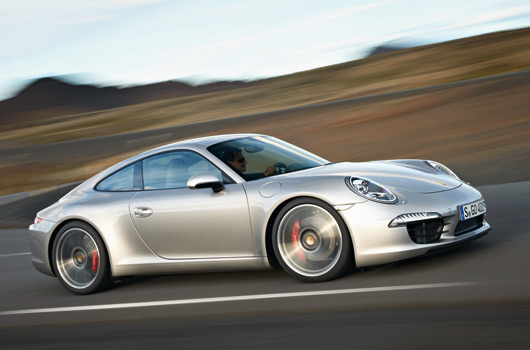
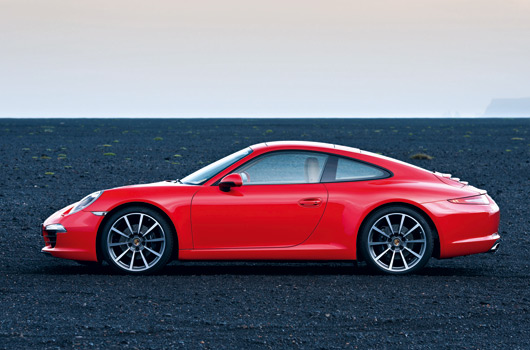
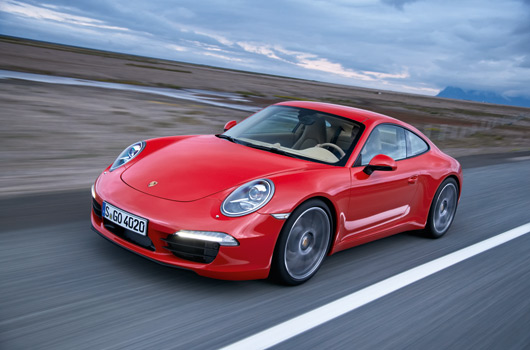
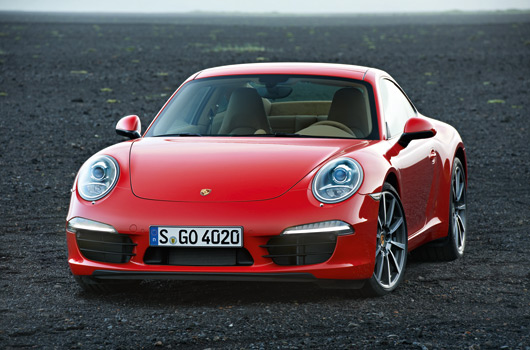
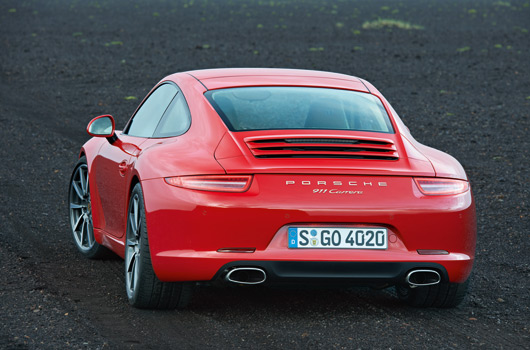
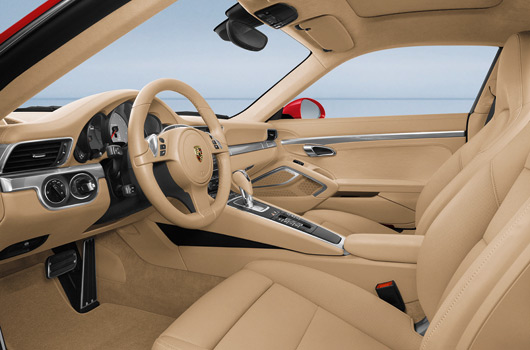
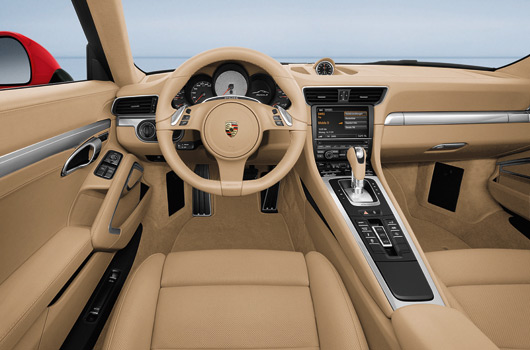
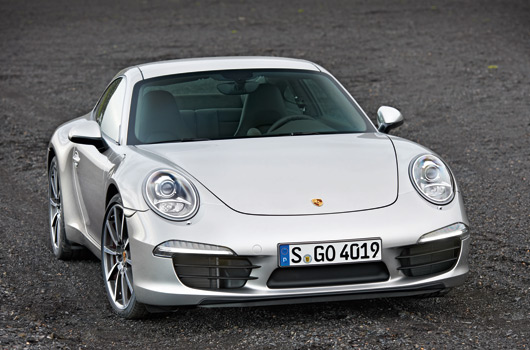
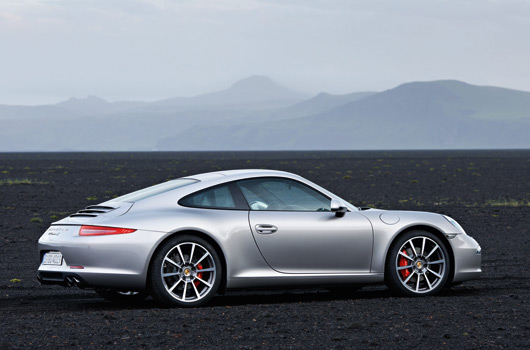
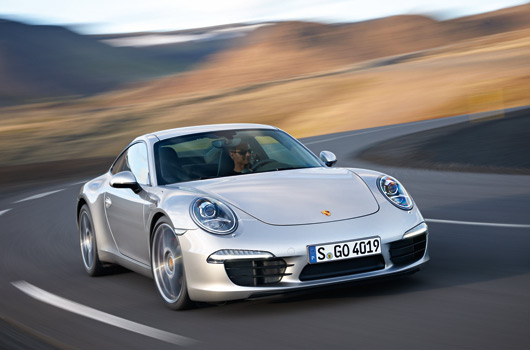
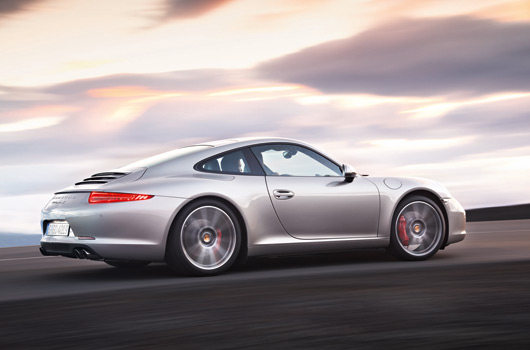
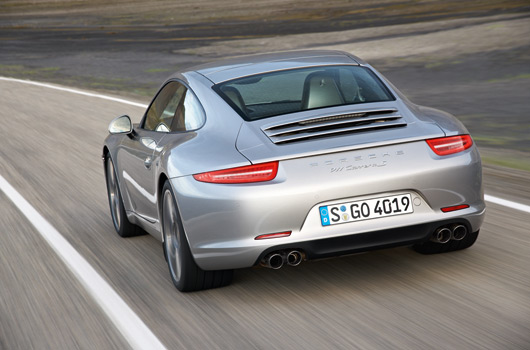
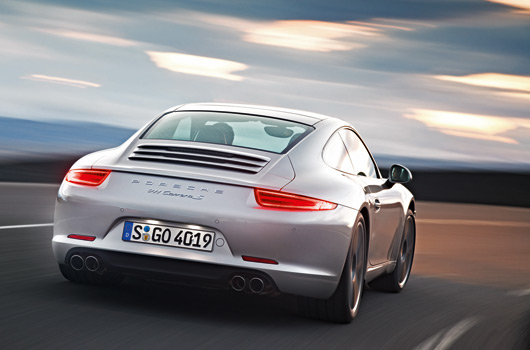
49 replies on “OFFICIAL: 2012 Porsche 911 (991) revealed”
Awesome. Beautiful.
What is interesting about this car (but isn’t part of the press release) is that the front track has increased substantially, but the rear track has remained the same. So thank goodness, the car is no wider than 997 (1808mm). I guess they learned from the GT2RS that increasing the front track improved the stability and turn quite a bit.
not feeling it yet.
anyone want to buy a 1 yr old and a 3 year old, wife can be thrown in as well, if you choose. i need about 285000.. or best offer..
Haha, nice one Andrew!
beano, you’ll come around soon enough.
Beano, its funny i wasnt keen on it when Liam first posted the leaked images, but now im looking at it again and wondering what organs i dont need. if only i had a wife and kids to part exchange like Andrew…
[…] has come through confirming local pricing for the new Porsche 911. The 991 is expected in Australia by March 2012 and list pricing will start at $229,900 for the […]
‘Wife and Kids’…..Don’t wish that upon yourself Mark!!!
i’ll give my wife and kids for free. i just gotta find ’em first.
[…] has released this teaser video of the new 991 911. Dramatic scenery, and music to go with, makes this clip worth watching over and over […]
I like the new design, the front fascia is more aggressive looking than in the previous incarnation of the 911. It is as Porsche mentioned a sleeker car. However, is it just me, or have I seen the taillights worn on another famous marque…Perhaps Aston Martin?
[…] help promote the new 991 911, Porsche has released this short clip reminding us of the previous generations that have entered […]
[…] Porsche having already released images and details about the new 991 911 we bring you a selection of videos from the car’s world premiere at the Frankfurt Motor […]
I’m really liking the new 911 – Ever since the hideous mistake of the 996, they have gradually been pairing it back to something more nimble, lithe looking (which, in my view, the 993 was). This looks ready to pounce, can’t wait to see it in the flesh, but that wider lower stance at the front, and elongated rear lights are great hints at what this will look look in real life. I had thought about a second hand 997 before going for a 1M recently – with this coming out, glad I didn’t buy a 997!
[…] new Porsche 911 Carrera S has reportedly posted a best lap time around the Nordschleife of 7 minutes 40 seconds. That makes […]
[…] brings us new video of the 991 911 from the Frankfurt Motor Show. This time August Achleitner, Manager of the 911 model line, has his […]
[…] week Car had heaps of Porsche information and one thing to grabbed our attention was the claim the new 991 911 will last two seven year model cycles. That will take the basic chassis structure, launched at […]
[…] August the world’s motoring press have now managed to get their lucky hands on the brand new 991 Porsche 911. Here’s a teaser of what they […]
[…] on its new 911 Carrera Cabriolet. Obvious exception aside, the Cabrio is basically a carbon copy of the 911 Coupé. The engine and gearbox options are the same, which means a 257kW 3.4 litre engine for the Carrera […]
[…] Following his teaser we shared with you the other day, Chris Harris is back with his full review of the new 991 Porsche 911. […]
[…] fitting, then, that the worldwide debut of a right-hand drive 991 Porsche 911 took place in Melbourne at an invitation only event on the weekend held to celebrate the 60th […]
[…] Porsche 911 Carrera […]
[…] has just released this short film on the making of its new 991 911. The moody voiceover man tells us Porsche goes to extreme lengths to test their cars. Some of the […]
[…] amateur video recording of the 2012 Porsche 911 South African dealer launch has made its way onto the Tubes. The 991 is certainly a landmark model […]
[…] hopes the 991 will continue the company’s sales growth. Last year Porsche set a new record when it sent […]
[…] friendly Scot Gordon Robertson, from the Porsche Experience Centre Silverstone, the keys to the new 991 911 Carrera S. He obliges by getting tail happy and talking us through some of the advancements of the new […]
[…] new 991 Porsche 911 is going to be an absolute cracker. Everyone knows it. If we had our way we’d have put our […]
[…] You may have noticed we’re suckers for a Porsche 911 video here at AUSmotive. With this clip Porsche tugs at the heartstrings by taking us back to where it all began, before bringing us back to the present day with the 991 911. […]
[…] You may have noticed we’re suckers for a Porsche 911 video here at AUSmotive. With this clip Porsche tugs at the heartstrings by taking us back to where it all began, before bringing us back to the present day with the 991 911. […]
[…] seven gears. The only question remaining is will it be an adaptation of the 7-speed manual from the Carrera or a double-clutch […]
[…] an understated worldwide RHD debut of the new Porsche 911 at a special display-only event in Melbourne last November, the 991 is now in Australia ready for […]
[…] the United States Porsche is undertaking the somewhat embarrassing move to recall new 911 Carrera S models due to a possible fault which could result in a fuel line to become […]
[…] for Evo in his latest track comparison. His weapons of choice are the MY12 Nissan GT-R and the 991 Porsche 911 Carrera S. Nissan v Porsche, it’s the Ford v Holden of the supercar […]
[…] happier news, the 991 Porsche 911 has just been awarded the 2012 World Performance Car title at the New York International Auto […]
[…] more to this Club Coupe than a lick of Brewster Green paint. Starting with a 991 Carrera S, Porsche has upped the power by 22kW to a new peak of 316kW. That power gain has been achieved […]
[…] looks set to join Porsche by offering a 7-speed manual gearbox sometime in the future. Such plans were revealed when a BMW […]
[…] is well on the way to filling another 911 niche with its 991 platform, as this spy shot of a 2013 model Targa shows. Don’t let the Cabriolet style roof fool you, […]
[…] of information for the Carrera 4 and 4S. Of course, the major difference here, compared to the regular 911s, is the addition of an all-wheel drive system, or Porsche Traction Management (PTM) to use the […]
[…] factory driver Patrick Long is on hand to talk us through the ABC of the latest 991 911, the Carrera 4S. There’s seven bite size videos which Porsche introduces with these […]
[…] release onboard video to support a claimed Nürburgring lap time. In this instance it’s the 991 911 Carrera S and its 294kW 3.6 litre flat six lapping the Nordschleife in 7 minutes 37.9 […]
[…] video to support a claimed Nürburgring lap time. In this instance it’s the 294kW 3.6 litre 991 911 Carrera S lapping the Nordschleife in 7 minutes 37.9 […]
[…] latest incarnation of the Boxster, the 981, is supposed to be very, very good. Similarly, the new 991 911 is also slowly winning over its critics, still pining at the loss of the remarkable 997 model that […]
[…] Porsche 911 (991) […]
[…] rear axle is 44mm wider than the 991 Carrera S. The conrods are titanium and forged pistons, just a couple of the measures that allow the 3.8 […]
[…] body of the new 911 Turbo is the widest you can buy on the 991 platform and is 28mm wider than the Carrera 4. Check the photo from the rear, this car is phat! Running on […]
[…] has said happy birthday to its iconic 911 with this special 50th anniversary edition. Based on the 911 Carrera S it’s powered by a 294kW 3.8 litre flat six and adorned with model specific 911 50 […]
[…] a hatchback remember, with power to embarrass supercars of only a few years ago. Never mind that, a 911 Carrera S only has 294kW. This thing will be totally nuts. We love […]
[…] Oh, can you believe the 991 is now three years old! […]
[…] notice the revised styling at the front compared with the first gen 991 911 launched in 2011. Also, at the rear there is new rear lights as well as a new twin exhaust […]